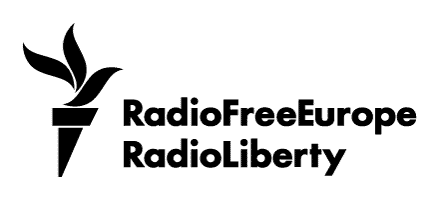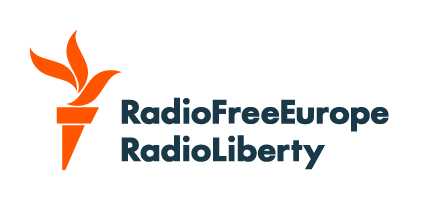This could have been a momentous week in Ukraine’s long-term wish of joining the European Union and NATO. In the end, it wasn't.
As leaders of the two institutions met for key summits in Brussels and The Hague respectively, Kyiv’s eventual membership of both should have been a centerpiece.
Instead, Ukraine is no closer to joining either — and the many obstacles in the war-torn country's path to the Euro-Atlantic community were on full display.
Rewind one year to NATO’s Washington summit.
Just like in Vilnius a year ago, Ukraine was frustrated that it didn’t get an invitation, but the final declaration gushed about the country.
“We fully support Ukraine’s right to choose its own security arrangements and decide its own future, free from outside interference. Ukraine’s future is in NATO,” the text reaffirmed before adding “as Ukraine continues this vital work, we will continue to support it on its irreversible path to full Euro-Atlantic integration, including NATO membership.”
Joe Biden, the US president at the time, was reluctant to go further, with Kyiv engaged in direct conflict with Russia.
Germany was quietly backing Washington’s stance but the warm language and “the guest of honor” treatment of Ukrainian President Volodymyr Zelenskyy at the summit was indicative of an aspirant country that soon would transform to a full-fledged ally.
At this year’s NATO summit in The Hague, the scenes could not have been much starker.
Biden is no longer president. In his place is Donald Trump, who has openly dismissed Ukraine’s chances of joining for years.
And the new reality was on display everywhere.
There was no NATO-Ukraine Council on leaders’ level. No one talked openly about Ukraine’s eventual membership and there were no words about it in the final declaration.
Instead, there was just a line that allies can count financial support to Kyiv as part of the military alliance’s new defense spending target.
Granted, Zelenskyy was present at the summit dinner. He met all relevant leaders, including a bilateral with Donald Trump that according to all read-outs went well. Trump even said he was nice, opened up for potential Patriot deliveries to Ukraine, and seemed to show willingness to press the Russian President Vladimir Putin to come to the table.
But in reality, Ukraine got nothing concrete, niceties aside.
Washington is still reluctant to sanction Russia, the Europeans are shying away from their signature proposal to lower the Russian oil price cap, and when it comes to NATO membership, Kyiv is further away now than it was a year ago.
The fact that officials said it was a success that Trump didn’t treat Zelenskyy badly and that the Ukrainian didn’t complain about the lack of outcomes shows how low expectations were.
"I don't consider the summit a failure for Ukraine. On the contrary, we got the maximum of what is realistically possible for today," Volodymyr Fesenko, a Ukrainian political scientist told Current Time.
"The fact is, even in the highly condensed NATO communiqué, there’s a dedicated point about continued support for Ukraine under current conditions -- and that’s exactly what we need. Not some abstract statement or vague promise that we’ll join NATO at some undefined point in the future."
At an EU summit in Brussels a day later, the story of dashed hopes was eerily similar.
At the same June summit in 2022, Ukraine was granted EU candidate status and exactly a year ago the same gathering decided to formally start accession talks.
This year, the stated goal from both Kyiv and Brussels was to officially open several of the six negotiation clusters needed to become a member.
Both the European Commission and 26 of the 27 EU member states believe that Ukraine is ready for this, but there is a need for unanimity to make it happen.
And so far, Hungary has not played ball. Quite the opposite.
In the run-up to the summit, Hungarian Prime Minister Viktor Orban presented the results of a consultative referendum in the Central European country in which over 2 million people, or 95 percent of those who cast ballots, had voted against Ukrainian EU membership.
Going into the meeting he said that “the problem is the war, if we integrate Ukraine, we integrate the war.” When pressed by RFE/RL if he would change his mind if there is a cease-fire, he simply retorted that there isn’t one.
The fact that draft summit conclusions of just EU-26 had been drawn up in advance shows that the Budapest blockage is taken for granted.
The text notes member states invite "the Council to take the next steps in the accession process in line with the merit-based approach, with clusters being opened when the conditions are met. It takes good note of the assessment of the Commission that the fundamentals cluster is ready to be opened. The European Council will revert to this issue at its next meeting.”
It's symbolic support of Kyiv’s EU integration, but practically it means nothing.
It was also indicative that Zelenskyy didn’t show up in person in Brussels, addressing the leaders via videolink instead.
EU officials cited “logistical reasons” for his absence, which is curious considering that he managed to be in both The Hague and that he addressed the Council of Europe in Strasbourg the day before.
While there are hopes that Hungary might give in soon, perhaps even later this summer, most European officials concede that the veto might last all the way up to the Hungarian parliamentary election slated for April 2026 as the issue of Ukrainian EU integration now has crept into the national debate.
It is also telling that no more EU countries have put bigger pressure on Hungary to give the green light.
But there are other things that are more important right now.
Take the need to get the country onboard when it comes to agreeing on new Russia sanctions and to roll over those imposed in the last three years, something that happened at the summit.
But then there is a sense in European capitals that some countries secretly are quite comfortable with slowing down Ukraine’s EU accession.
And this goes beyond Hungary and Slovakia, which has expressed reservations on moving forward too quickly.
Poland recently elected a new president, Karol Nawrocki, who didn’t shy away from criticizing Ukrainian agricultural imports to the EU or raise thorny historical issues between Warsaw and Kyiv. Czechia might elect a government in the autumn that would be decidedly less enthusiastic about Ukraine in general.
Ukraine’s most immediate neighbors clearly see that Ukraine will fight for the same EU funds that they are counting on in the coming years. And even further West, there are reservations about being too quick in taking in a big and poor country locked in a bloody conflict with a nuclear superpower.
The club itself must undergo reforms for such an addition to the family and those reforms are both politically and financially painful.
Unlike its NATO bid, Ukraine’s EU membership is not off the table.
But this week has shown that the ambitious goal of getting Kyiv in by 2030 might have to be revised. “Let’s just say that the 2030s sounds more feasible now,” as one diplomat put it.













